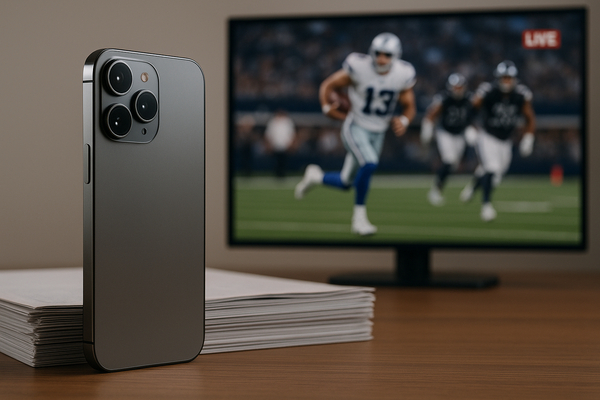
Apple’s iPhone 17 (NASDAQ:AAPL) is posting stronger early demand than the prior cycle and the company is spending to convert hardware gains into subscription reach. Counterpoint Research shows the iPhone 17 series outsold the iPhone 16 by 14% in the first 10 days in the U.S. and China; the base iPhone 17 nearly doubled base iPhone 16 sales in China and rose 31% across those two markets. At the same time Apple locked a five‑year U.S. Formula One streaming deal starting 2026. Short term, early sales and shipping stability lift service conversion prospects. Over the long term, bundled sports rights and device refresh momentum can widen global—U.S., China and Europe—revenue streams versus past cycles.
Early iPhone 17 Sales: What the numbers show
Data released this week points to a clear early advantage for the iPhone 17. Counterpoint found a 14% uplift in the first 10 days versus the iPhone 16 in the combined U.S. and China markets. Reuters reported the base iPhone 17 model almost doubled the base iPhone 16’s China sales in the same window, and overall model sales rose 31% across both markets.
Those figures matter now because launch-week velocity often determines carrier allocations, promotional cadence and short‑term inventory tightness. BofA highlighted stable iPhone 17 shipping dates as evidence of steady demand and kept a constructive view on Apple’s edge in edge‑AI and device supply coordination.
Compare this to recent cycles: a midcycle lull in upgrades followed the iPhone 12–13 transitions, while a stronger early run more closely resembles the iPhone 6 and iPhone X rollouts when demand and trade‑in economics pushed refresh rates higher. Short‑term, carriers and China retail channels will be the bellwethers to confirm sustained replacement activity.
Services and sport: Apple TV’s Formula One bet and what it means
Apple announced a five‑year U.S. Formula One streaming partnership that begins in 2026 and will make races available on Apple TV. Reports put the deal near $140 million in media rights. The move broadens Apple’s live‑sports menu and aims to make Apple TV a higher‑value bundle for device owners.
Apple shares reacted positively; some reports show a roughly 1% bump after the announcement. Senior services executives flagged user friction across dozens of sports subscriptions as a problem to fix, and this exclusive U.S. deal is a direct response. For consumers in the U.S., the offer will simplify access to a premier live sport. Globally—especially in Europe and Asia where F1 viewership is strong—the partnership adds a content differentiator for Apple’s services bundle, though F1 TV Premium will still be available through Apple TV for U.S. subscribers.
How hardware strength, AI and the wider chip market connect to Apple’s strategy
Apple’s better opening sales give the company three levers to grow non‑device revenue: higher installed base, stronger trade‑in economics and expanded service packages. Analysts at Evercore and BofA have reiterated positive takes on Apple’s device cadence and edge‑AI positioning. That device momentum arrives while the semiconductor world is tightening around AI demand: Broadcom (NASDAQ:AVGO) and NVIDIA (NASDAQ:NVDA) headlines show capital and product focus on data‑center silicon. Even so, Apple’s strategy remains device‑centric, with software and content layered on top.
Supply signals also matter. Stable shipping times for iPhone 17 models suggest Apple has managed logistics and supplier sequencing well this cycle. At the same time, regional policy and trade friction continue to influence how suppliers and chipmakers allocate capacity—an ongoing backdrop for any hardware launch that sells into both the U.S. and China.
- Takeaway 1: Early demand is meaningful — 14% higher first‑10‑day sales versus last cycle and a nearly 100% jump for the base model in China point to stronger upgrade economics this quarter.
- Takeaway 2: Services acceleration is explicit — a five‑year, U.S. Formula One pact (starting 2026) signals Apple’s intent to turn hardware engagement into longer customer relationships.
What to watch next: carrier activations and trade‑in volumes in the U.S. and China over the next four weeks, Apple TV subscription sign‑ups tied to live sports promotions, and any changes in shipping lead times reported by retailers. Separately, monitor analyst notes on edge‑AI features and any supplier updates that could affect future iPhone cycles.
Actionable summary: Apple’s (NASDAQ:AAPL) early sales data and the Formula One rights deal together point to a deliberate push to convert device momentum into higher‑value services. In the near term, sales velocity and shipping stability will drive the signal. Over time, exclusive live sports and edge AI features can increase engagement and the potential size of Apple’s services receipts across major markets.












